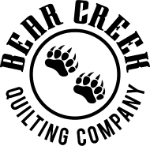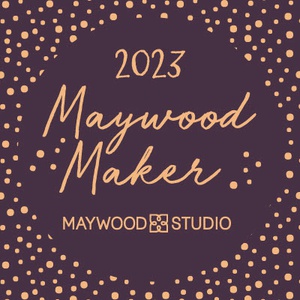- When piecing the top, press all your seams carefully.
- Pressing to one side creates a stronger seam.
- Pressing seams open can result in less bulk. Follow the quilt pattern and use your best judgement.
- Bulk from layered seams can cause the long arm machine needle to break, and/or cause skipped stitches. Nesting seams is a great way to reduce this bulk.
- Nesting seams is the process of pressing your seam allowances in opposite directions from row to row so that they lay flatter and produce less bulk.
- If the quilt top fabrics are pre-washed, pre-wash the backing fabric too.
- Try to keep the quilt top and back clean / free of pet dander, hair, lint and loose threads. If you are aware of stains, make note of them for the quilter.
- Watch for big wrinkles. The flatter and smoother a quilt top is, the easier it is to load onto the machine without fear of sewing creases down.
- Folding the quilt top and back for shipping will not create troublesome creases.
- Check for fullness. Lay your quilt top down on a flat surface. An area of fullness will not lay flat, and may appear somewhat like a deflated bubble. Decide then if anything can be done, by you, to help it lay flat before it reaches the quilter. Know that the quilter will try to work in any fullness, but areas of fullness could result in pleats being stitched into the top.
- Measure your quilt top and borders precisely. Pin from the center outward when attaching borders to help prevent waviness.
- If borders are wavy or uneven know that the quilter will do everything possible to ease them in during quilting but there is a chance of resulting pleats or gathers along the border.
- We may contact you to ask your preference in regard to pleats or gathers to take up extra fabric.
- The more clean cut and straight the edges of the quilt top are, along with consistent square/rectangle shape, the more efficient to load and to stitch.
- Rotary cutters and a ruler give the straightest edges.
- In general, the quilting area is a shape with straight sides. If you are wanting a more decorative edge, such as scalloped, please wait to cut it until after the quilting is completed.
- Keep all threads clipped as close as possible to prevent seeing thread ‘shadows’ after the quilt has been sewn.
- If your quilt top has pieced borders, backstitch the ends of the seams to keep them from popping open.
- If your quilt top is pieced to the edges without borders, baste around the edge of the quilt top about 1/8th inch in from the edge to ensure seams don’t pop open.
- Do not pin or baste any of the layers together. The top and backing need to be separate to efficiently load it onto the quilting frame.
- Bear Creek Quilting Company includes Quilter’s Dream batting in the cost of the service; one less thing to worry about.
- Use appropriate backing; sheets and blankets, for instance, are not suitable for different reasons. If you’re questioning if it is a suitable backing fabric, ask at the time of intake.
- Make sure the backing is at least 4 inches bigger on all sides. For example, a 100 x 100 inch quilt would need to have 108 x 108 inch backing.
- Bigger than 4 inches is fine. If it is much bigger, we may ask if we can trim it down to load onto the machine.
- Don’t worry about removing the selvage edge from a backing fabric – they make loading easier.
- Add embellishments after quilting. We won’t be able to stitch a quilt with embellishments. Examples include charms, buttons, sequins, or beads.
- Properly secured applique is workable, but be aware the Edge-To-Edge stitch design may stitch over it.
- Applique not thoroughly adhered to the quilt top may have loose edges that catch the hopper foot and fold over. Examples include Prairie Points, fringes, ears, petals, or anything that is designed to hang loose and away from the quilt top.
- One last look over your quilt top helps to spot any last minute possible issues that may need to be fixed. Examples include seams that have come open or threads that have come loose with handling or finishing the top.
- If the quilt top, quilt back, or desired stitch out is directional, identifying which edge is the top with a pinned note will remove any guess-work.
- Ask as many questions as needed to feel comfortable during intake
|




